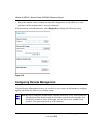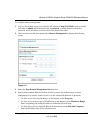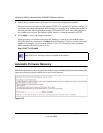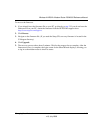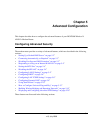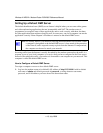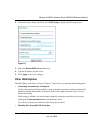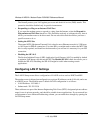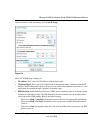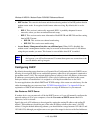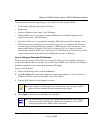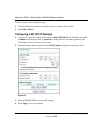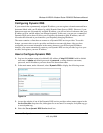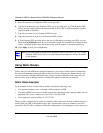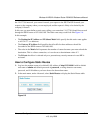
Wireless-N ADSL2+ Modem Router DGN2000 Reference Manual
5-4 Advanced Configuration
v1.0, July 2008
The firewall protects your LAN against port scans and denial of service (DOS) attacks. This
protection should be disabled only in special circumstances.
• Responding to a Ping on an Internet WAN Port
If you want the modem router to respond to a ping from the Internet, select the Respond to
Ping on Internet WAN Port check box. This should be used only as a diagnostic tool, since it
allows your modem router to be discovered. Do not select this check box unless you have a
specific reason to do so.
• Setting the MTU Size
The normal MTU (Maximum Transmit Unit) value for most Ethernet networks is 1500 bytes,
or 1492 bytes for PPPoE connections. For some ISPs you might need to reduce the MTU. But
this is rarely required, and should not be done unless you are sure it is necessary for your ISP
connection.
• Disabling the SIP ALG
The Session Initiation Protocol (SIP) Application Level Gateway (ALG) is enabled by default
to optimize VoIP phone calls that use the SIP. The Disable SIP ALG check box allows you to
disable the SIP ALG. Disabling the SIP ALG might be useful when running certain
applications.
Configuring LAN IP Settings
The LAN IP Setup screen allows configuration of LAN IP services such as DHCP and RIP.
The modem router is shipped preconfigured to use private IP addresses on the LAN side, and to act
as a DHCP server. The modem router’s default LAN IP configuration is as follows:
• LAN IP address. 192.168.0.1
• Subnet mask. 255.255.255.0
These addresses are part of the Internet Engineering Task Force (IETF)–designated private address
range for use in private networks, and should be suitable in most applications. If your network has
a requirement to use a different IP addressing scheme, you can make those changes by opening the
LAN IP Setup menu.



